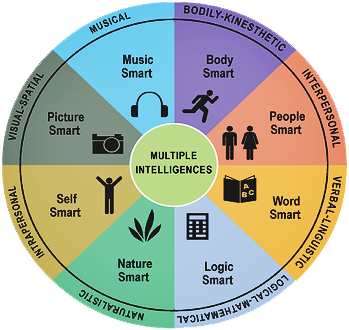Preprimary
The curriculum at Shiksha Veritas Playschool in preschool is an integration of various methods of teaching and analyzing comprising of Playway method, Montessori Method, Project method, Multiple Intelligence.
Playway Method:
Playway is one of the most important ways of learning through play. A child goes through hundreds of experiences, picks up several kinds of information, develops numerous skills and inculcates valuable attitudes and values. He also learns to express his thoughts and feelings. Playway also becomes an instrument for transmitting the culture heritage, adoption of customs and values for personal life and for social living.
Playway is different from play. it is a spirit or an approach which should pervade all activities-Classroom, Play field, hobbies, creative work, etc. Playway is one of the most essential means of growing. Playway helps to develop mental, social and physical skills including talking and walking. It helps children grow in curiosity, competence and confidence. It lays the foundation for school work and for learning necessary skills in later life.
Various Activities through playway: Dramatic play, games, amusement games, watching others, looking at pictures, listening to stories, poems, listening to music, watching television, sand play, water Play, etc.
Montessori Method:
Maria Montessori was an Italian lady doctor who brought one of the foremost educationists of the world. Dr.Montessori designed a school for the mentally defective children and designed various apparatus to teach them the differences between colours, skills and tastes. She made building bricks by which children could learn sense of length, height, thickness etc. She developed special apparatus to fasten buttons and shoes. The major advantages you see in your child by implementing this method of training in school is to improve mental deficiency caused due to dullness of senses, marvelous results in education, and far better results seen in education when educating normal children with same method.
We have included the best Montessori apparatus in our school and the latest equipments are added constantly.
Project Method:
The project method is a medium of instruction which was introduced during the 18th century into the schools of architecture and engineering in Europe when graduating students had to apply the skills and knowledge they had learned in the course of their studies to problems they had to solve as practicians of their trade, for example, designing a monument, building a steam engine. In the early 20th Century, William Heard Kilpatrick expanded the project method into a philosophy of education. His device is child-centered and based in progressive education.
Students in a project method environment are allowed to explore and experience their environment through their senses and, in a sense, direct their own learning by their individual interests. Very little is taught from textbooks and the emphasis is on experiential learning, rather than rote and memorization. A project is that in which the child performs such constructive activities in natural conditions so that they may learn to lead best possible social life without difficulty. The project method is helpful in teaching various subjects. It also gives practical knowledge while helping them solve real life’s problems.
Multiple Intelligence: (Jr.Kg Onwards)

Schools today are facing enormous challenges. They need to make sure that their existing framework is in sync with latest educational norms. Multiple curriculums, lack of parental involvement, higher teacher attrition rates and increasing student dropout rates are only a small gamut of a bigger problem. Ultimately the core purpose and competency of education namely teaching and learning sometimes takes a back seat .
Identifying, measuring and enhancing student talent in schools is a key ingredient for their success.
Shiksha Veritas with its inbuilt Intelligence Assessment assists in introducing better and more efficient Intelligence management systems in order to equip students to handle various challenges of the 21st century. Ultimately schools are geared towards:
- A successful performing student in his/her strength zone
- An empowered faculty focused on the correct student attributes
- Informed parents who become part of the student success story
- A 100% student pass percentage, performing at higher grades
Multiple Intelligence:
Multiple Intelligence inspired growth is what we undertake through implementation of multiple intelligence in school. This model was proposed by Howard Gardner in 1983. Gardner chose eight abilities that he held to meet these criteria: musical–rhythmic, visual–spatial, verbal–linguistic, logical–mathematical, bodily–kinesthetic, interpersonal, intrapersonal, and naturalistic.
How we do it:
We associate each activity done by the children in the school environment like (Outdoor games, activities, field trip, free play, sand play, conversation, garden activity, puzzle play, sorting and matching games, music & painting activity, interactive gaming, etc) and they are collated in a chart called the rubrics where each intelligences associated with the activity is recorded and numerically calculated.
Advantages:
Helps in identifying the intelligences the child is good in and also to develop the strengths and weakness. Identify the learning style of your child. Develop the curriculum as per individual needs. Children are able to grasp concepts at a faster pace while having fun in the process. Quarterly updated report of the multiple intelligence profile available in the portal.

Shiksha Veritas is the amalgamation of two words Shiksha and Veritas. Shiksha stands for education in Hindi while Veritas (Roman Mythology) was the goddess of truth, a daughter of Saturn and the mother of Virtue. Veritas stands for truth, knowledge and beauty.
